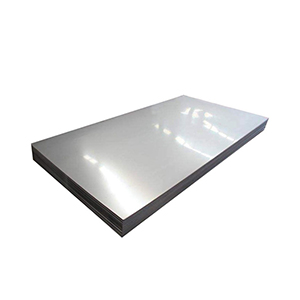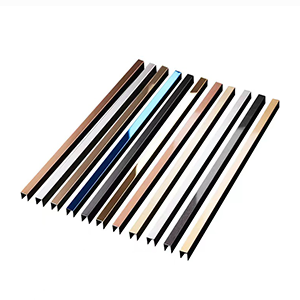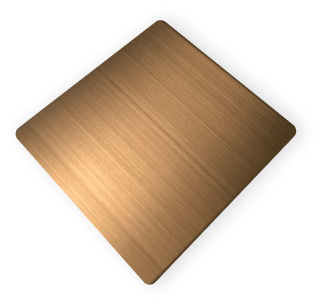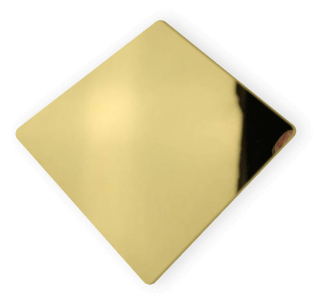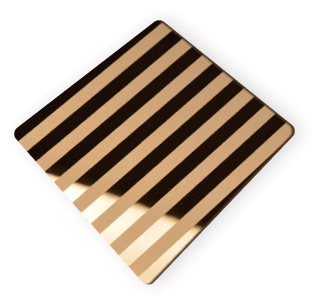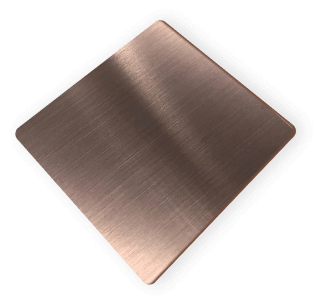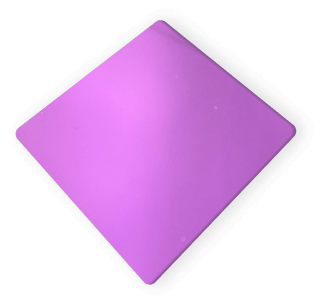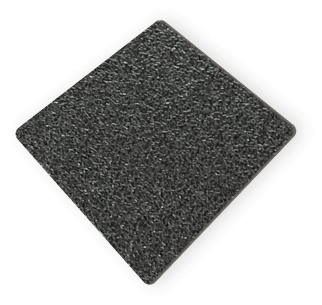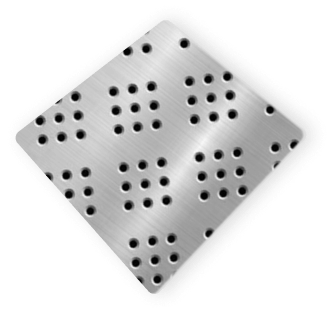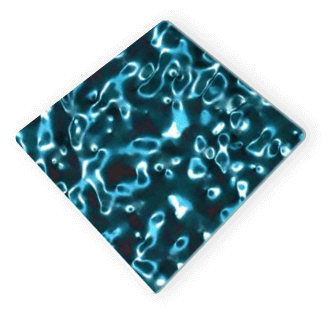
Dans le processus de conception, de nombreux designers aiment poursuivre la cascade de différentes textures et reflets exprimés par une variété de matériaux. Parmi les matériaux décoratifs en évolution rapide, les matériaux en acier inoxydable ont toujours été l'un des moyens utilisés par les concepteurs pour agrandir un espace limité. L'acier inoxydable lui-même est un matériau froid et dur, mais cela peut faire en sorte que l'espace montre une température exquise et élégante. C'est le romantisme des matériaux en acier inoxydable.

Au cours des dernières années, quand l’acier inoxydable ondulé entre dans le champ de vision du public, les matériaux décoratifs en acier inoxydable ont une fois de plus marqué le début d'une vague d'utilisation innovante, en particulier l'acier inoxydable sous diverses formes utilisant “en relief” processus. Lorsqu'il est associé à un éclairage adapté, l'effet scintillant rend tout l'espace plus vide et transparent. Cela approfondit considérablement la sensation de profondeur de l’espace.
La plaque d'acier inoxydable gaufrée est une sorte de motifs concaves et convexes exquis sur la surface d'une tôle grâce à de grands équipements mécaniques CNC et des moules à motifs de précision.
La tôle gaufrée en acier inoxydable présente les avantages de la résistance à la corrosion, résistance aux rayures, résistance à l'usure, fort effet de décoration, résistance anti-empreintes digitales, etc. Il convient généralement aux plafonds intérieurs, murs d'ascenseur décoratifs, décoration architecturale, construire des murs-rideaux, etc.
Au cours des dernières années, la plaque en acier inoxydable ondulée par l'eau, un produit de célébrité sur Internet pour le design d'intérieur, serre la tôle d'acier inoxydable de haut en bas à travers des machines et équipements hydrauliques, résultant en un concave, structure de vagues à plusieurs niveaux bosselée et ondulante à la surface.
Caractéristiques de la tôle d'acier inoxydable de gaufrage
Comparé à d'autres matériaux décoratifs, la tôle gaufrée en acier inoxydable a de nombreux styles, durable, couleurs riches, fort sens tridimensionnel, et a également la sécurité, protection de l'environnement, protection incendie et autres propriétés.
Les propriétés des plaques d'acier inoxydable sont très stables et ne changeront pas leurs propriétés en raison de l'humidité de l'air..
en outre, c'est dur et plus durable. Le motif est estampé sur la plaque en acier inoxydable pour former une feuille métallique gaufrée, et son sens visuel tridimensionnel est immédiatement présenté devant vous.
UN. Bonne adaptabilité environnementale
L'acier inoxydable gaufré est étanche, ignifuger, résistant aux acides et aux bases, point de fusion élevé, pas facile à brûler, forte ténacité et non fragile, et pas facile à corroder dans un environnement acide-base.
Par rapport aux panneaux isolants traditionnels pour murs extérieurs, les feuilles métalliques gaufrées ont une meilleure résistance au froid et une meilleure isolation thermique.
B. Bonnes performances en matière de sécurité
La plaque gaufrée en acier inoxydable est sans rayonnement, sûr et respectueux de l'environnement, et facile à nettoyer.
Il est résistant aux chocs et aux fissures et a une durée de vie plus longue. Il présente une très bonne résistance aux chocs et s’utilise à l’extérieur du bâtiment, ce qui peut réduire considérablement son impact sur le bâtiment. Surtout dans certains bâtiments avec des structures légères en acier, il est particulièrement adapté à l'utilisation de panneaux en acier inoxydable gaufré.
C. Forte mise en forme
Grâce à la bonne ténacité de l'acier inoxydable, diverses formes peuvent être réalisées par soudage, brossage, flexion, polissage et autres processus.
ré. Bon effet de décoration
La surface est propre, lumineux et unique. Il a un sens typique de l'art de la mode métal., la feuille gaufrée est disponible dans une variété de couleurs, et il n'y a pas lieu de s'inquiéter de la décoloration.
E. Utilisation secondaire environnementale
La couleur primaire de l’acier inoxydable est stable, insoluble et oxydé, il peut être recyclé et a une certaine valeur de préservation de la valeur.
Il n'y a aucune interférence chimique dans le processus de renforcement, et l'impact sur l'environnement est relativement faible, et le remplacement du bois peut protéger l'environnement et réduire l'exploitation forestière.
F. Personnalisation haut de gamme

Il existe de nombreuses structures de motifs en acier inoxydable gaufré, qui peut fournir des services personnalisés et concevoir des styles de modèles uniques en fonction des exigences des consommateurs pour répondre aux besoins de la majorité des utilisateurs.
Classification des tôles gaufrées en acier inoxydable
Les tôles gaufrées en acier inoxydable peuvent être divisées en deux catégories selon le processus de production:
Estampage
Traitement des feuilles, force locale;
L'estampage est fréquemment estampé par un motif sur la plaque, Ainsi, la profondeur et la sensation tridimensionnelle du motif d'estampage sont plus fortes que le motif roulé.
Gaufrage de bobine
Traitement des bobines, force moyenne;
Le gaufrage de la bobine est l'ensemble roulé sur le rouleau de gaufrage à travers la bobineuse, ainsi la planéité de la plaque gaufrée au rouleau est meilleure que celle de la plaque d'estampage.
Les plaques d'acier inoxydable embouties peuvent être divisées dans les catégories suivantes en fonction de leur apparence:

Série simple face:
Processus: Dans les conditions de fonctionnement d'un moule à motif unique grâce à des machines et équipements de pressage à rouleaux, la bobine en acier inoxydable est posée dessus pour l'extrusion, de sorte que le devant soit un motif concave et convexe, et le revers est plat.

Série double face:
Processus: Grâce à des machines et équipements de pressage à rouleaux, dans les conditions de fonctionnement de deux moules à motif cylindrique, la tôle d'acier inoxydable est extrudée des deux côtés, de sorte que les côtés avant et arrière présentent la forme de hauts et de bas concaves, communément appelés motifs en relief double face.

Série de vagues d'eau:
Processus: La tôle d'acier inoxydable est extrudée de haut en bas à travers des machines et équipements hydrauliques, de sorte qu'il y ait une structure de motif multicouche concave et bosselée sur la surface.
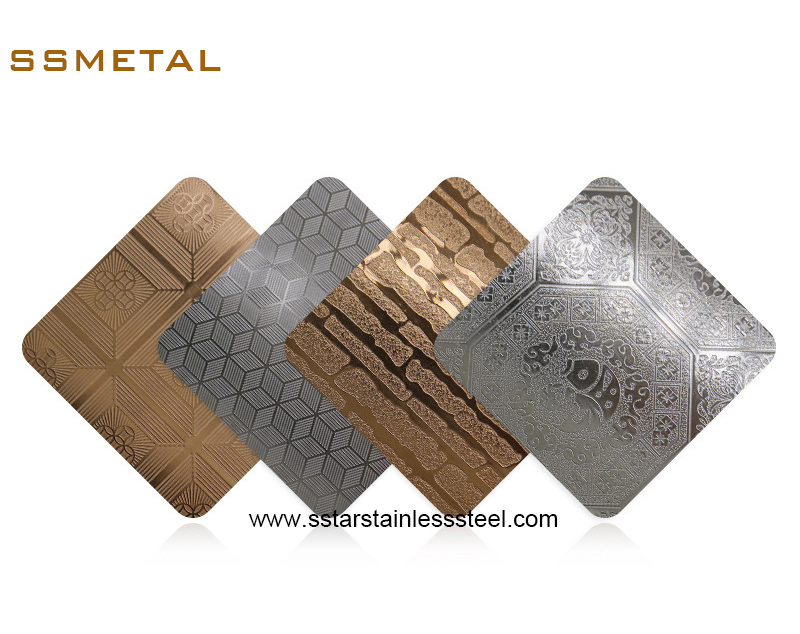
Le processus de coloration de la surface de l'acier inoxydable peut apporter différentes couleurs à l'acier inoxydable embouti, rendre le métal plus coloré, et peut également améliorer efficacement la résistance à l'usure et à la corrosion du produit.
Les méthodes de coloration de surface couramment utilisées pour les tôles d'acier inoxydable embouties comprennent principalement: coloration électrolytique, rétro vieux, et placage de titane sous vide.
Les principales couleurs produites sont: champagne or, or rose, or, noir, bleu, cuivre, bronze, etc.
À l'heure actuelle, il existe de nombreux types de plaques gaufrées sur le marché. Communément, tels que des motifs en perles, petits plaids, diamants, rayures, antique plaids, chrysanthèmes, céréales gratuites, Modèles européens, grains de bois, grains de riz, etc.






